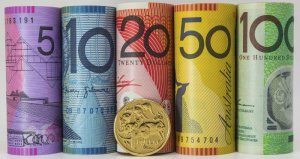
Provided that their employees still meet the super guarantee eligibility criteria, employers will be required to make super contributions into their eligible employee’s super fund, starting 1 July 2022.Employers will also be required to review their updated payroll and accounting systems to ensure that any super payments made after 1 July 2022 are accurately calculated into their employee’s super guarantee entitlement.
From 1 July 2022, online tools and calculators will be available to assist in implementing this change.
For more information about these measures, click here.






 Company Directors can be held personally liable for a company’s unpaid employee superannuation.
Company Directors can be held personally liable for a company’s unpaid employee superannuation.
 The Australian dollar is currently hovering around a 20-month low against the US dollar, and several emerging markets across the globe are experiencing havoc. Yet the Australian economy is showing solid progress.
The Australian dollar is currently hovering around a 20-month low against the US dollar, and several emerging markets across the globe are experiencing havoc. Yet the Australian economy is showing solid progress.